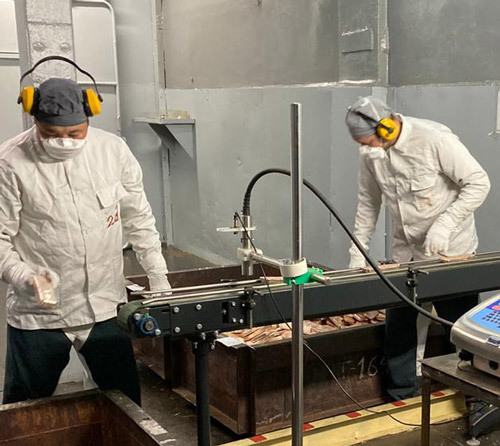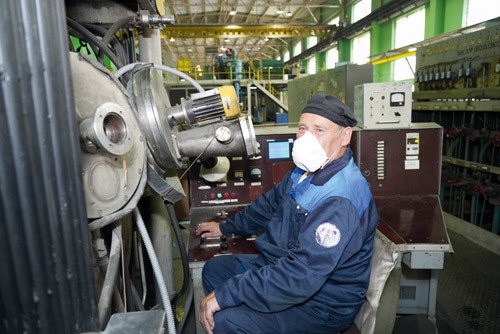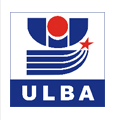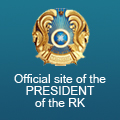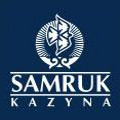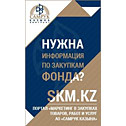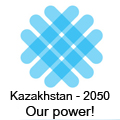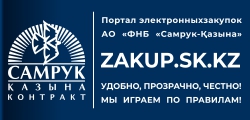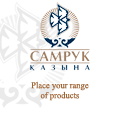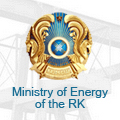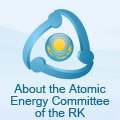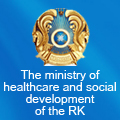Best NAC Innovators
In the last issue of UMZ-Inform we told about the winners of the factory innovation competition. In today's issue dedicated to the Metallurgist's Day, we will introduce you, dear readers, to the best innovators according to Kazatomprom opinion! It is very symbolic that they are all metallurgists!
BO's innovation proposal «A way to increase the volume of heating steam condensate involved in the technological process of obtaining technical beryllium hydroxide» took first place in the nomination «The best innovation proposal within the framework of the Green Mindset – Green Thinking Initiative». The authors are Evgeny Sokolov, Vitaly Nikitin, Ivan Lysyak and Alexander Kirillov.
In the process of obtaining technical beryllium hydroxide, heating steam condensate (KGP) is used, coming from the operation of evaporation of ammonium fluoroberylate solutions in evaporators. KGP from the chemical site is pumped into tanks (plate filters-illuminators) of the hydrometallurgical department and is further involved in the chain of obtaining technical beryllium hydroxide.
The disadvantages of the existing situation were:
– limited capacity of plate filters-illuminators (previously there were two of them), which did not exclude partial discharge of KGP through the overflow line from the equipment into the reactor and its further transportation together with the sludge to the tailings farm site;
– cyclic intake of KGP into plate filters-illuminators, which in some cases led to an insufficient volume of KGP directed to the washing of beryllium intermediates from impurities. At the same time, there was a need to fill the missing volume of KGP in the form of recycled water.
The authors proposed to use additional (in reserve) capacitive equipment in KGP reception and distribution system, namely, a tank into which the pumped condensate of heating steam is received. When the volume of KGP in the filters-illuminators is reduced to the electrode of the lower level by automatically switching on the pump, KGP is pumped from the tank into the filters-illuminators until the electrode of the upper level is triggered. The advantage is the use of almost the entire volume of the incoming condensate of heating steam in the process of obtaining technical beryllium hydroxide by excluding its discharge along the overflow line from the filter-illuminators into the reactor and further to the tailings section.
Another BP's rational proposal – Use of Linx 5900 drip-jet printer and a conveyor belt for marking ligature ingots received second place in the nomination «The best digital solution for production». Its authors are Alexander Sveridenko and Dmitry Andreev.
At beryllium production, the marking of copper-beryllium and aluminum-beryllium ligature ingots (MBL and ABL) was carried out manually. After the disassembly process, the apparatchik puts an imprint with the campaign and batch number on each ingot with a typesetting ink stamp.
In a batch of MBL, the number of ingots can reach 600 pieces, in a batch of ABL – 250 pieces. When marking with liquid ink, there were cases of streaks, spots, blurred numbers, and an indistinct impression due to the presence of irregularities on the surface. The monotonous work of the apparatchik could lead to errors.
To automate the process and mechanize the manual labor of marking MBL and ABL ingots, Linx 5900 drip-jet printer and a conveyor belt are used. Now the ingots are placed on the conveyor by the apparatchik. Moving along the ribbon, they pass under the printer's printhead, which automatically applies ULBA logo, campaign number and batch number.
The implementation of the project led to the mechanization of manual labor – reducing the monotony in the work of BP personnel, made it possible to make the labeling of products more accurate and clear.
The innovation proposal of TO «Changing the technology of processing the turnover of metallurgical production of condenser powders by using direct electron beam remelting» was awarded the second place in the nomination «The best innovation proposal that creates a social or other effect». Its creators are Alexey Alekseev, Vladislav Ralovets, Denis Moskvichev and Viktor Yavorovsky.
At tantalum production, initially, the turns of metallurgical production of condenser powders were processed according to the scheme: mixing with sodium-thermal powder (NTP) or the turns of a vacuum arc furnace (VAR); pressing into tablets; melting of tablets into VAR; melting of VAR ingot by double electron beam remelting. And only then the ingot was sent to the production of metallurgical grade condenser powders, semi-finished products for production of finished products, tooling.
The disadvantages of this technology were a long multi-stage cycle of processing of metallurgical production revolutions (WMD) to a semi-finished product (Ebeam ingot), increased dust and gas formation during mixing, pressing and melting on the furnaces of the WMD revolutions, the possibility of ignition of the material during the operation of mixing and pressing of WMD revolutions and a significant amount of material movement between housings and sections of TO.
TO workers proposed to reduce the cycle time of production of products and semi-finished products, reduce labor costs, improve the sanitary condition and strengthen safety during the technological process, as well as for more convenient handling of the material during the processing of metallurgical production revolutions, to exclude the technological operation of processing OMP condenser powders by vacuum arc melting. Semi-finished products, in the form of Ebeam ingots for production of condenser grade powders, should be produced from OMP condenser powders by direct electron beam remelting. At the same time, quality of semi-finished product obtained remains as high as with the old technological chain.
Samal Iskakova
